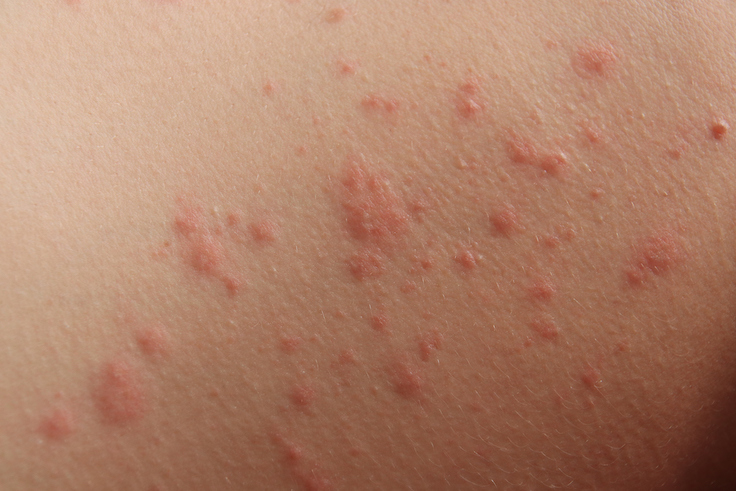Contact Dermatitis

Learn more about contact dermatitis and how our board-certified dermatologists can help treat it.
Contact dermatitis is inflammation of the skin that results from direct contact of a substance with the surface of the skin, which may or may not be related to an allergy. Some substances are always irritating to the skin.
Causes
A person develops contact dermatitis when something that touches the skin does one of the following:
- Irritates the skin
- Causes an allergic reaction
There are two types of contact dermatitis:
- Irritant contact dermatitis is the most common form and develops when substances such as solvents or other chemicals irritate the skin. The exposure produces red, often more painful than itchy, patches on the involved skin areas.
- Allergic contact dermatitis is an immune response triggered by an allergen. Nickel, perfumes, dyes, rubber, latex, topical medications and cosmetics frequently cause allergic contact dermatitis. More than 3,600 substances can cause allergic contact dermatitis.
Anyone can develop contact dermatitis. Your risk factors may be increased if you are in regular contact with an irritant or allergen or if you already have allergies to certain substances, such as plants, chemicals, or medications. People working in certain professions have a higher risk. Sometime this is referred to as occupational dermatitis. It is important to know that the more you come in contact with a substance, the more likely you are to develop an allergy to it and for it to be the cause of allergic contact dermatitis.
Symptoms
Signs and symptoms of contact dermatitis rarely appear with immediate contact. Most symptoms of contact dermatitis appear within 24-72 hours. An allergic reaction requires more than 1 exposure to the substance, but after this, a reaction can occur quickly. Rarely, people can develop a severe allergic reaction known as anaphylaxis. Symptoms occur within seconds or minutes. A person may have:
- Difficulty breathing due to swelling in the throat
- Swollen face and/or eyes
- Confusion
The entire body reacts during these events. If anyone has any of these symptoms, seek immediate medical care. During normal contact dermatitis reactions, when signs and symptoms do appear, you may have:
- Itchy skin, which can be intense
- Rash, including red, swollen, hot skin
- Excessively dry skin
- Burning
- Stinging
- Hives, which are round welts on the skin that itch
- Fluid-filled blisters
- Oozing blisters that leave crusts and scales
If exposure to the allergen continues, your skin may:
- Flake and crack
- Become scaly
- Darken, thicken, and feel leathery
Treatment
Treatment is the same for both types of contact dermatitis.
The steps involved during treatment are:
- Avoid or lessen the exposure to the substance that is causing the rash
- Treat the rash, often using antihistamine pills, moisturizer and corticosteroid cream
- Severe reactions may require stronger medications, such as prednisone
- Wet dressings and oatmeal baths can help soothe symptoms until the rash clears
By avoiding what caused the rash, most people can avoid flare-ups.
If you work with substances that caused the rash, you can still avoid the rash. Your dermatologist can recommend ways to work and products to use. More than 80% of people diagnosed with occupational dermatitis successfully manage the condition and recover without any problems.

